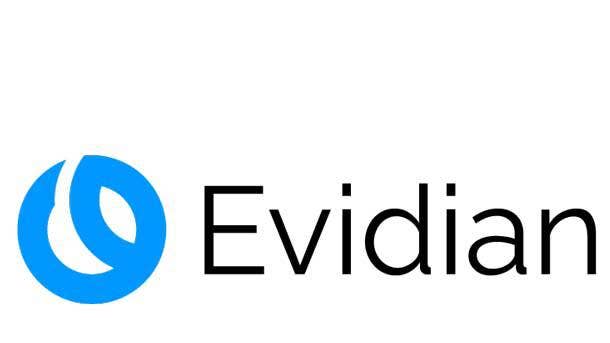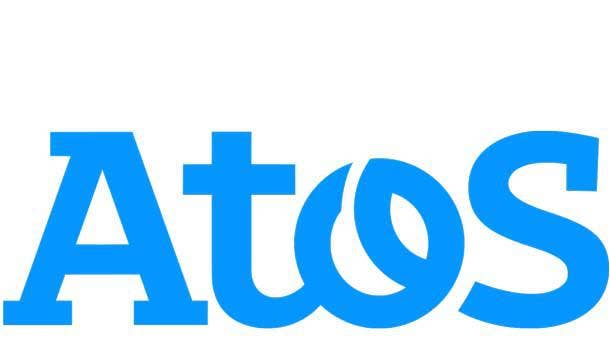Atos May Split Into Two Companies: 5 Things To Know
Atos is exploring the creation of two separate companies—Atos, with a focus on managed infrastructure services, digital workplace and professional services, and Evidian, with a focus on digital transformation, big data and cybersecurity.

Atos Going Forward
Atos, a global systems integrator and solution provider with a focus on cloud and digital transformation and a large managed security services practice, Tuesday unveiled a plan to potentially divide into two separate companies. The separation, if it happens according to plan, would likely occur during the second half of 2023.
CRN reached out to Atos for comment but had not heard back by press time.
The decision to explore the creation of two companies—Atos, with a focus on managed infrastructure services, digital workplace and professional services, and Evidian, with a focus on digital transformation, big data and cybersecurity—comes as the Paris-based company is looking for a way to unlock what it calls the highest value for its stakeholders.
While officially no final decision has been made, current Atos CEO Rodolphe Belmer said in a prepared statement that the potential separation into two companies would be the culmination of a plan started early this year, which was about the time that he took over as CEO.
“This potential new path for Atos would aim to optimize the two distinct markets that the Group operates in, both with fundamentally different dynamics: on the one hand, the infrastructure-driven, asset-led market, and, on the other hand, the digital applications and security driven market. Separating these two businesses would create two companies, leaders in their respective segments with proven and recognized track records.”
Belmer is now planning to retire in September as his current role would change significantly if the company splits.
Atos has already determined who would lead the future Atos and Evidian. Atos would be led by a 21-year Atos veteran, while Evidian would be placed in the hands of a new C-level executive who joined the company only two months ago.
While the potential split into two companies is being touted as a way to unlock the value of the current Atos, it comes during a time of financial decline for the company. Atos for fiscal 2021 reported falling revenue and a loss and said its fiscal 2022 may still see a decline.
To understand where Atos is today and what it might look like by year-end, CRN broke down the company’s numbers and news. Here is a look at the past, present and especially the future of Atos.

Atos Now
Atos was formed in 1997 through a merger of two French IT companies and in 2002 acquired KPMG Consulting’s U.K. and Netherlands business. It has over the years built a huge global IT solutions business based in large part on some significant acquisitions.
Atos has 111,000 employees in 71 countries. It offers services around advanced computing, analytics and AI, cloud, cybersecurity, customer experience, decarbonization, digital transformation, edge and IoT.
Atos North America is ranked No. 28 on the CRN 2022 Solution Provider 500.
Atos worldwide has 17 subsidiaries in which it owns 100 percent of the companies, as well as another 18 in which it is either a majority or minority owner. Its largest subsidiary is Bull S.A., which at one time was Europe’s main opportunity to compete against IBM but which now focuses on hardware and software sales, IT consulting and IT services. Atos acquired Bull in 2014.
Atos’ largest acquisition was global solution provider Syntel, which it acquired in 2018 in a deal worth $3.8 billion. Over the years it has acquired a total of nearly 40 companies, including the IT subsidiary of Siemens in late 2010 and the IT outsourcing business of Xerox in late 2014. The company made 10 acquisitions in 2021.
However, Atos was unable to consummate its biggest potential acquisition. Atos in 2021 reportedly offered $10 billion for Tysons, Va.-based DXC Technology but walked away from the deal, saying at the time it was comfortable with its own growth path.

Atos Future: Evidian
Assuming the split of Atos occurs, the company’s digital transformation, big data and cybersecurity business would be split off into a new company for now called “SpinCo” but which eventually would be known as Evidian.
Evidian, under Deputy CEO Philippe Oliva, would be a 4.9 billion euros, or $5.1 billion at current exchange rates, company. The part of Atos that would become Evidian saw 5 percent growth in revenue in 2021 compared with 2020.
Evidian would have two primary lines of business.
Its digital business would potentially have 50,000 employees along with strong partnerships with hyperscale cloud providers and leading software vendors. The digital business by itself generated 3.5 billion euros, or about $3.6 billion, in revenue, making it the largest part of Atos as a whole. The digital business plans to invest 370 million euros, or $385 million, as part of an acceleration plan from 2022 to 2026.
Atos’ big data and security business has 9,000 employees. This business generated 1.4 billion euros, or about $1.5 billion, in fiscal 2021.

Atos Future: Atos
If the split is complete, the other half, known for now as TFCo, short for Tech Foundations, would retain the Atos name.
The future Atos would include the infrastructure and private cloud business, which helps customers shift from traditional to next-generation infrastructures, and is a business that in fiscal 2021 generated revenue of 5.4 billion euros, or $5.6 billion. However, this is a business that is in decline, having reported its revenue in fiscal 2021 falling by 12 percent.
Atos going forward is looking to restore growth, profitability and positive cash flow by 2026, the company said.
The future Atos is slated to have 48,000 employees worldwide.
Atos is looking to invest 1.1 billion euros, or about $1.14 billion, between 2022 and 2026 in a turnaround plan to restore the company to growth. It is a three-step plan that includes exiting nonstrategic businesses and turning around or exiting negative margin accounts; addressing structural issues including right-shoring, cutting third-party spending, consolidating data centers and facilities; and investing in next-generation offerings and capabilities.
The future Atos expects to generate 5.0 billion euros, or $5.2 billion, in revenue in fiscal 2022, with that figure dropping to 4.1 billion Euros, or $4.3 billion, by fiscal 2024 before resuming growth in fiscal 2026.

Churn In The Executive Suite
Atos has seen a lot of changes in its executive lineup in the last six months including two CEO changes and the appointment of three C-level executives from outside the company.
Atos on June 14 appointed two top-level executives, Nourdine Bihmane and Philippe Oliva, to become deputy CEOs of the company.
Bihmane, the new deputy CEO in charge of Atos’ Tech Foundation, has led that organization as CEO since February, and has been with Atos for over 21 years. He would be responsible for the new Atos.
Oliva, who joined Atos on April 1 as chief commercial officer, is the new deputy CEO of Atos’ digital/big data and security perimeter, which would become Evidian. Prior to joining Atos, Oliva spent four years at Eutelsat, the last three as chief commercial officer.
The announcement of CEO Belmer’s planned resignation—which Atos said was initiated by Belmer, who felt he had no choice given the significant reduction in the scope and mission of the CEO as the company potentially divides into two, comes less than six months after he joined Atos as group CEO in January 2022 to lead the company’s transformation following six years as CEO of Eutelsat.
In between the CEO changes, Atos in March also unveiled a massive change in the rest of its executive suite, including bringing in of three new C-level executives from outside the company:
* Oliva, as noted above, joined Atos from Eutelsat to become chief commercial officer.
* Stéphane Lhopiteau in May became Atos’ CFO, bringing with him a 30-year history in corporate finance in tech and large project-driven industries, including experience as CFO of Naval Group.
* Diane Galbe was appointed chief strategy and sustainability officer and general secretary where she also handles the company’s mergers and acquisitions. She spent the prior 15 years at Suez, serving most recently as member of the executive committee and senior executive vice president group in charge of strategy and transformation.
The company also named Jean-Philippe Poirault as its new head of big data and security, a position, which like Atos’ C-level executives, is a part of the company’s executive board. Poirault has been with Atos since September 2019.

Tough Year For Atos
Following a significant warning about Atos’ finances in January that caused its share prices to fall by nearly 17 percent in one day, the company Feb. 28 reported worldwide revenue for fiscal year 2021 of 10.8 billion euros, or $12.2 billion, based on the exchange rate on that day of $1.12 per euro. That was down 3.1 percent from the previous year’s revenue of 11.2 billion euros.
Atos reported a loss of 3.0 billion euros, or $3.4 billion, down from last year’s net income of 550 million euros. The company also reported a negative free cash flow of 419 million euros compared with positive free cash flow of 513 million euros in the prior year.
Atos at the time said the fall in revenue was due to a decline in customer’s classic IT business, which exceeded growth in the company’s digital, cloud, security and decarbonization activities and from bolt-on acquisitions.
Revenue from Atos’ North America business fell 4.0 percent in fiscal 2021. Atos said that a decline in classic data center activities was only partially offset by good performances in its consulting, systems integration and application development, cloud, and big data and security businesses. By industry, Atos said its public sector and defense, resources and services, and health-care and life sciences businesses were down, while its telecom, media and technology, manufacturing, and financial services and insurance businesses saw growth.
Belmer (pictured), in a prepared statement at the time, said, “Atos faced significant headwinds in 2021, reflected in the Group’s results. It failed to meet its financial objectives, and a comprehensive review of its assets and contracts, conducted earlier this year in light of the recent change in Group strategy, have led to major impairments.”
For fiscal 2022, the company said before it announced its possible split that it expects revenue to grow between negative 0.5 percent to positive 1.5 percent.
Things did improve during the company’s first fiscal quarter. Atos on April 27 reported first fiscal quarter revenue down year over year by 0.6 percent despite 1.5 percent growth in the Americas region and 18.3 percent growth in revenue outside Europe and the Americas.